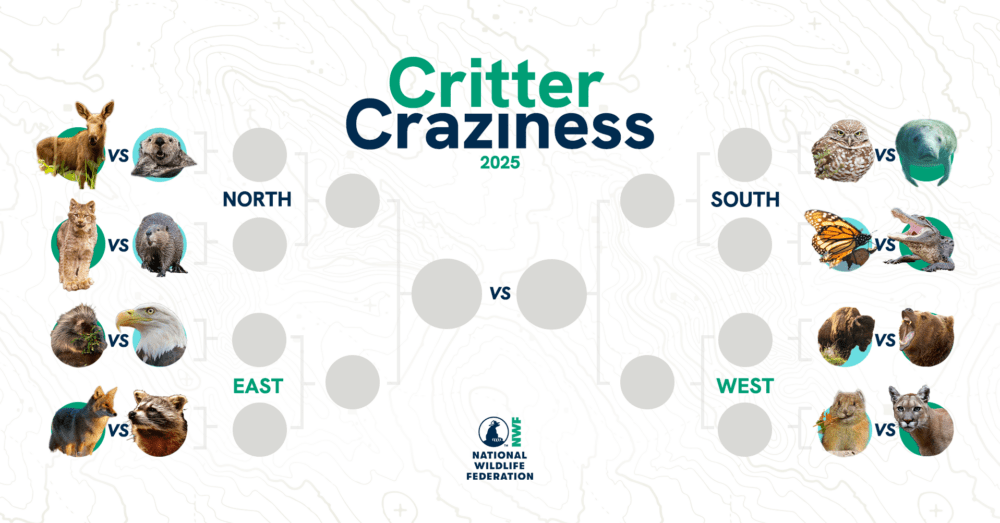We have much more to do and your continued support is needed now more than ever.
Top 5 Real Sea Serpents. Sort of.
Shark Week? Not bad, not bad. I myself am a lifelong fan of the ecologically vital and ridiculously cool cartilaginous fish that terrorized Amity Island and Crocosaurus alike. I give sharks a 10.
But for a truly unique maritime experience, join me on a Sea Serpent Day (August 6th or 7th; there is some dispute) excursion to LISTVILLE (population: five).
The first mention of sea serpents in letters is generally accepted as coming from Virgil’s Aeneid, around 30 BCE. Laocoön, priest of Neptune, was preparing a bull sacrifice with his sons when “a pair of sea serpents with huge coils” and “blood-red crests” made way for the shore and enveloped the statue-ready trio in their “scaly folds.” There were “burning eyes” and “hissing jaws,” and I’m told younger and more sensitive altar viewers needed to leave the room.

In the centuries since, ‘sea serpents’ and their sundry variations have been reported everywhere from Nova Scotia to the Portuguese coast and described variously as “turtle-like,” cow-faced and possessed of “brilliant flaming eyes” (these and other details come mostly from Richard Ellis’s 1994 book ‘Monsters of the Sea,’ which contains many period eyewitness accounts full of taxonomic and linguistic weirdness).
While we’ve yet to get reliable word of the existence of sea serpents, scientists have come up with a number of likely—and in some cases verified—explanations for sea serpent sightings, including these five based on actual, factual wildlife.
1) Oarfish

This is one of the simplest imaginable explanations, and the first thing I thought of when I read about the “blood-red crests” of the Laocoön-eating serpents (Scientists too. See incredible photos on this blog and the engraving above; sea-serpent-ish, no?).
Now, Oarfish are an unassuming family of bony saltwater fish, only slightly more likely to fatally maul a hirsute Trojan priest than a clump of kelp. Still, the largest of them, the King of Herrings, may reach somewhere between 40 and 50 feet in length, and could easily set the imagination racing as it breaks the surface of the water crest-first, its big eyes glistening.
The oarfish is scarce, apparently tastes bad and is still largely a mysterious animal. Here’s Kurt Ove Eriksson, who spotted a smaller specimen off of Sweden’s western coast last year: “At first we thought it was a big piece of plastic. But then we saw an eye […] I went down to check and saw that it was this extremely strange fish.” Nice work, Kurt.
2) Basking Shark

In one of the most famous sea serpent incidents of recent times, a Japanese fishing boat near New Zealand hauled in a vaguely monsterish corpse in 1977. It appeared to be a long-necked, small-headed, four-flippered creature—a surviving plesiosaur, perhaps, long the single most popular sea serpent theory. Crewmembers discarded the corpse, but not before numerous intensely-scrutinized photos and samples were collected.
The corpse remains popular in cryptozoological lore despite the near-unanimous informed conclusion that it was, in fact, a partially-decayed basking shark. The placid filter-feeder is well known for rotting into a what appears to be a serpentine form. From the link above, originally printed in Reports of the National Center for Science Education: “When the basking shark decays, the jaws and loosely attached gill arches often fall away first, leaving the appearance of a long neck and small head […] All or part of the tail (especially the lower half which lacks vertebral support) and/or the dorsal fin may also slough away before the better supported pectoral and pelvic fins, creating a form that superficially resembles a plesiosaur.” More:
Interestingly, basking sharks seem to have a propensity to mimic sea serpents while alive as well as dead. Often they feed in groups at or near the surface (hence their name), sometimes lining up two or more in a row. When they do this, the dorsal and tail fins protruding from the water can be, and sometimes have been, mistaken for multiple “humps” and head of a long-bodied sea-monster (Sweeney 1972; Bright 1989; Ellis 1989; Perrine 1995).
3) Basilosaurus/Zeuglodon (prehistoric whale)
I’m cheating here, but the badly-named basilosaurus (originally thought to be a type of dinosaur) WAS a real, live animal at one point.

In 1845, a German entrepreneur/collector/flim-flammist named Albert Koch unveiled a crazy looking skeleton—a modern-day sea serpent, he said—and toured with it in New York and other American cities. For a little while, it was the talk of zoology, taken by casual observers as proof that sea monsters existed (Koch claimed to have unearthed the skeleton in Clarksville, Alabama, and went so far as to describe its behavior and other details on the basis of the bones).
Despite the unending credulity of contemporary audiences—this kind of hoax was perpetrated often and successfully in 19th-century science, which was sometimes closer to circus exhibitionism than anything else—it became clear pretty quickly that the 114-foot thing had been cobbled together from a variety of bones taken from five or so specimens of the the long-extinct basilosaurus, a prehistoric cetacean (certainly not a reptile, as Koch claimed).
Koch’s scientific name for the creature–-hydrarchos sillimani—was derived from the naturalist Dr. Benjamin Silliman, whose presence was thought to lend scientific legitimacy to the affair. Once Harvard anatomist Jeffries Wyman and others pointed out that it was an obvious fraud, Silliman requested his name be removed (Though, hey, it’s the main reason people remember him. There’s a lesson there).
4) Giant Squid
Giant squids are already among the coolest, monsteriest creatures of the deep, but they may account for some of the earliest serpent sightings as well.

In the mid-18th century, Bishop Pontoppidan reported a “Sea-monster” that “looks at first like a number of small islands, surrounded with something that floats and fluctuates like sea weeds” (see image at right, also featured in Ellis’s book). The Pontoppidan sighting was widely agreed to be a giant squid later on.
Later, in 1849, Prof. Japetus Steenstrup determined that a carcass discovered in 1639 (“a peculiar creature or sea monster” with “7 tails” covered in “buttons” and a soft body without bone or cartilage), presumed to be a serpent of some kind, was actually Architeuthis (with a few body parts missing). Many other sightings and discovered bodies from the 16th-18th centuries seem to fit this description as well.
Luckily, once people started figuring out that these multi-tailed (or headed) serpents were actually cephalopods, they were able to shift pretty seamlessly to freaking out about impossibly huge tentacled ‘krakens.’
5) Elephant Seal

Sir Richard Owen (somewhat controversial himself as a contemporary and opponent of Charles Darwin, but an important scientist of the day nonetheless) famously suggested that the Daedalus sea serpent off the Cape of Good Hope in 1848 had in fact been a semiaquatic mammal.
According to Owen: “It is very probable that no one on board the Daedalus ever before beheld a gigantic seal swimming freely in the open ocean.”
It’s not hard to see how a large elephant seal, with its formidable length and swollen ‘trunk,’ could easily have accounted for a crypto-animal sighting when beheld by weary sailors. In fact, the ninth volume of the Museum of Foreign Literature and Science, published in 1826, mentions reports of a “sea-monster in the neighborhood of Behring’s Straits (sic)” with a “head resembling a sea-lion” dating to 1808.
More useful: modern paleozoologist Darren Naish and his colleagues Michael Woodley and Hugh Shanahan have suggested that many historical sea monster sightings might be explained by unknown or little-seen pinnipeds (see posts on this and related topics at the sadly defunct Tetrapod Zoology blog here and here).





















